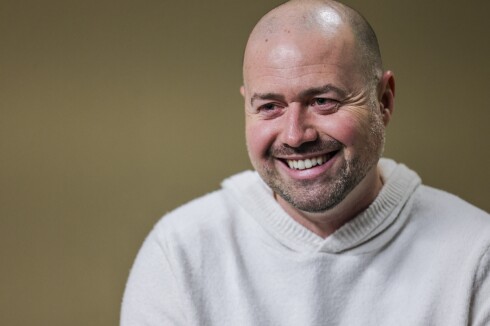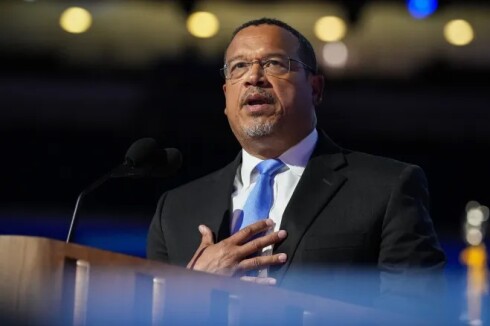DULUTH — The Minnesota Department of Transportation presented a $17 million preservation plan for London Road to more than 100 residents in attendance at Glensheen Mansion on Tuesday night, many of whom expressed concern and frustration with the proposal.
Several residents on London Road said they were not given adequate opportunity to give feedback on the project, which spans from 26th to 60th avenues east. The tentative schedule placed construction for the project, which includes roundabouts at 26th, 40th and 60th avenues east, for 2025-26.
ADVERTISEMENT
Tom Lamb, MnDOT project manager, said several surveys and notices were sent to all residences near the project. Virtual public meetings were held in April and September 2021.
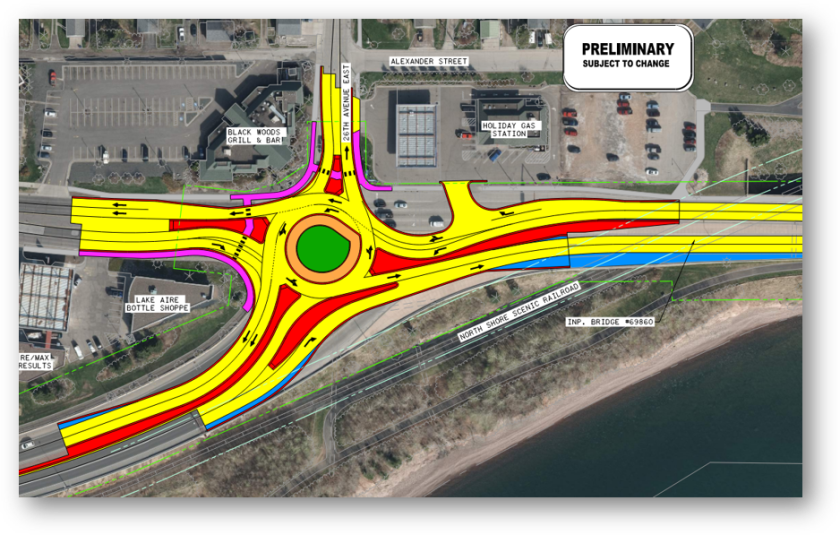
Lamb said feedback collected from about 2,200 survey responses listed the intersections at 60th and 40th avenues east, respectively, as the areas of highest concern due to large volumes of traffic traveling at high speeds and unsafe pedestrian crossings.
Matt Settergren, senior project manager for LHB Inc., said roundabouts have been proven in Minnesota traffic studies to slow vehicle speeds while keeping traffic moving through intersections. He also said it's a safer and faster alternative for pedestrians, who cross one lane of traffic at a time and don't need to wait for a crosswalk light. Many residents in attendance noted that they don't trust drivers to yield to pedestrians or to slow down enough to see someone in the roadway.
Center refuge islands for pedestrians are proposed for intersections at 32nd, 36th, 42nd, 43rd, 45th, 47th, 51st and 58th avenues east. Temporary examples of these crosswalks were installed on London Road over the summer at 36th and 60th avenues east. The islands will be removed for the winter.
The proposed roundabout at 26th Avenue East is a multi-lane roundabout, while 40th and 60th avenues east are proposed to have single-lane roundabouts. Several people at the public meeting said they were concerned about losing historic homes and community green spaces, such as University Park at 60th and London, in exchange for the roundabout's diameter.
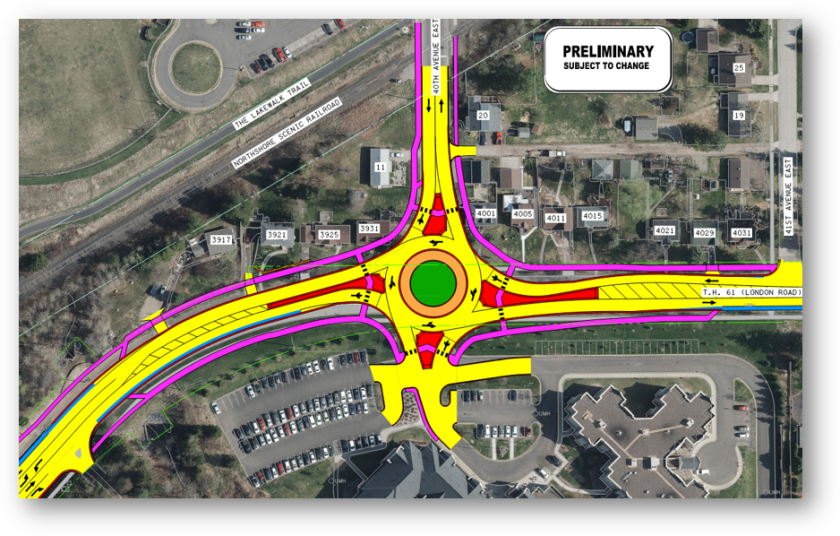
"My seven neighbors and I never received any opportunity to weigh in on what we perceive as traffic issues at 60th and London," said Richard Fraser, who lives at that intersection. "You're creating an issue there. I think roundabouts are an elegant solution, but I do not see a problem being solved at 60th and London. I think that I see huge issues for property owners, based on what's going to happen with construction, and the loss of a park."
The proposed single-lane roundabout would likely require the removal of at least one home at the intersection, and could use up to 10% of University Park's property, Lamb said.
ADVERTISEMENT
Audience members suggested MnDOT find a way to slow traffic down north of the Lester River Bridge instead, stating that a roundabout at 60th Avenue East is too late to attempt to slow vehicles coming into Duluth from Minnesota Highway 61.
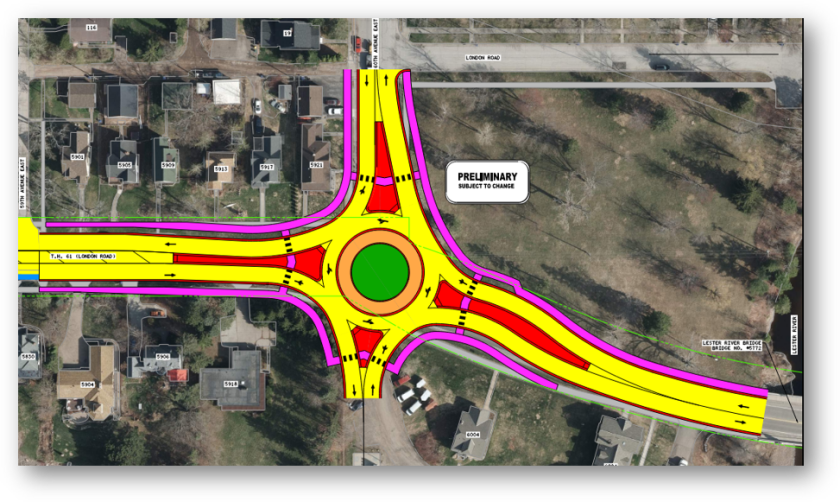
Jim Miles, a MnDOT traffic engineer, said about 20,000 vehicles pass between 26th and 40th avenues east each day on average, and about 10,000 pass between 40th and 60th avenues east on average each day. Lamb said the traffic volume passing through the intersection at 60th Avenue East and London Road is similar to that at 40th Avenue East, despite the lack of a traffic light at 60th Avenue. Many audience members expressed disbelief over that statement.
"I'm not going to say, 'OK, you have all the data, I'm not going to speak,'" said Ann Klefstad, who lives at 60th Avenue East and London Road. "You have the data about cars. I have the data about living in a neighborhood and aesthetics in a neighborhood and buildings in a neighborhood and how we feel about a neighborhood. That's my data and it's just as good."
Another aspect of the road refurbishment proposal includes narrowing the driving lanes from 12-13 feet down to 11 feet wide, and narrowing parking lanes from 12 feet to 8 feet wide. A 5-foot bike lane would then be added between parking and driving lanes.
Ben Stewart, who recently moved to Duluth from Chicago, said he appreciated the addition of bike infrastructure to the road, and he hopes future projects will continue to decrease community dependency on cars. He suggested engineers switch the bike and parking lanes, giving bikes more safety and protection from moving vehicles.
Another audience member said the Lakewalk is sufficient for bike travel and the addition of a bike lane to London Road would make the roadways too narrow, especially in winter when plowed snow accumulates on the shoulder and decreases the road's width.
Lamb said all comments and questions are being taken into MnDOT's consideration while the project is finalized. However, several residents said they didn't feel heard during Tuesday's meeting and were frustrated by the format of the project's planning phases.
ADVERTISEMENT
Another public meeting is being held virtually at 5:30 p.m. Wednesday, Oct. 12, and can be joined at mndot.gov/d1/projects/londonroad.
Additional feedback can be submitted at the link above, or can be directed to Tom Lamb at thomas.lamb@state.mn.us or 218-576-7207.
This article was updated at 12:55 p.m. Oct. 12 to correct the name of LHB Inc. It was originally published at 10:24 a.m. Oct. 12. The News Tribune regrets the error.








